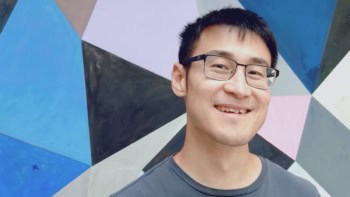
Three new protocols for generating verifiable quantum entanglement between two nodes in a network have been developed independently by teams in China, Europe and the US. The research, which allows distant quantum memories to exchange quantum information, may constitute a step towards a quantum version of the Internet in which photons travelling down standard optical fibres are used to entangle spatially separated quantum computers.
The delicate nature of quantum information means it does not travel well. A quantum Internet therefore needs devices known as quantum repeaters to swap entanglement between quantum bits, or qubits, at intermediate points. Several researchers have taken steps towards this goal by distributing entanglement between multiple nodes.
In 2020, for example, Xiao-Hui Bao and colleagues in Jian-Wei Pan’s group at the University of Science and Technology of China (USTC) entangled two ensembles of rubidium-87 atoms in vapour cells using photons that had passed down 50 km of commercial optical fibre. Creating a functional quantum repeater is more complex, however: “A lot of these works that talk about distribution over 50, 100 or 200 kilometres are just talking about sending out entangled photons, not about interfacing with a fully quantum network at the other side,” explains Can Knaut, a PhD student at Harvard University and a member of the US team.
Excited atoms
In their latest work, which is published in Nature alongside that of the Harvard team, Bao and colleagues present a more practicable system. At each node, they use a scheme called the Duan-Lukin-Cirac-Zoller (DLCZ) protocol that involves injecting a laser pulse into each of their atomic ensembles. This “write” pulse is composed of many photons, Bao explains, and there is a small chance that it will excite one atom to another state. The excited atom then spontaneously emits a photon, becoming entangled with a collective state of the atomic ensemble in the process. The emitted photons are then sent to a central node, where a measurement is performed that entangles the two ensembles.
The catch is that the DLCZ protocol requires the write pulses at each node to be phase-coherent, which is hard to achieve in spatially separated nodes. In their 2020 work, the USTC researchers did it by sending pulses from the same laser through a beamsplitter, but this would be impractical for real-world networks. In the new work, they stabilized the phases of independent lasers in three locations approximately 12.5 km apart around a central node and demonstrated that they could entangle ensembles at all of them. “By using atomic ensembles it is rather easy to convert from atomic qubits to single photons,” Bao notes.
Diamond memories
The other two teams worked with solid-state quantum memories made from vacancy centres in diamond. The first, headed by Ronald Hanson at QuTech in the Netherlands, stores the state of the qubit in the electronic state of a nitrogen-vacancy centre, as described in a recent arXiv preprint. The second, led by Harvard’s Mikhail Lukin, uses silicon-vacancy centres. These have a much more stable and coherent optical transition than their nitrogen counterparts, but their electronic spins are less stable, losing coherence within about 200 μs.
This short coherence time is problematic because entanglement cannot be used to transfer information unless the entangled states remain coherent long enough for the entanglement to be “heralded” – that is, for information to travel down a classical channel and confirm the success of the entangling operation: “If you cannot store your entanglement longer than a couple of hundred microseconds it’s essentially useless, because at the point when you want to start using it it’s already gone,” Knaut says.
The Harvard team circumvented this problem using something called a photon-nucleus entangling (PHONE) gate, which members of Lukin’s group invented in 2022. “This PHONE gate utilizes the electron spin, but only temporarily as an interface: it immediately transfers the information to the nuclear spin, and the nuclear spin is very long-lived,” Lukin says.
Lukin and colleagues also avoided the need to measure the photons at a central node. Instead, they used a serial entanglement protocol. “When the photon comes to the first node, it gets entangled – you basically do a gate operation between the photon and one of the qubits in the memory,” explains Lukin. “Then the photon comes to another node, you do another logic gate between the photon and the memory, and then eventually you measure a photon. It’s like a distributed quantum computer.”
The flexibility of this scheme enabled them to avoid keeping track of the phase of the photon emitted directly from the vacancy. Instead, they encoded the state of the qubit into two “time bins” – peaks in the electomagnetic field spaced 142 ns apart: “It’s a single photon conceptually but it is a superposition of two time bins,” Knaut says.
Telecom progress
Chris Monroe of Duke University, US, who was not involved in any of the works, finds one aspect of them interesting: “Quantum systems are very discriminating: they work with very specific colours of light, and they don’t typically tend to be telecom [wavelengths],” he says. “Each of these groups has converted the native photon to a telecom photon and that has allowed them to go over a long distance.”

Quantum repeater transmits entanglement over 50 kilometres
Apart from this, however, he is sceptical. “The ‘quantum Internet’ are two buzzwords that don’t mean a hell of a lot,” he says. “To build a big computer you’re going to need a quantum network, but it can be on one chip…We’re going to use photons to scale up, period. In a sense, this recent work is sort of irrelevant to that pursuit.”



